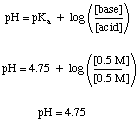Suggestions
Use up and down arrows to review and enter to select.Please wait while we process your payment
If you don't see it, please check your spam folder. Sometimes it can end up there.
If you don't see it, please check your spam folder. Sometimes it can end up there.
Please wait while we process your payment

By signing up you agree to our terms and privacy policy.
Don’t have an account? Subscribe now
Create Your Account
Sign up for your FREE 7-day trial
Already have an account? Log in
Your Email
Choose Your Plan
Individual
Group Discount
Save over 50% with a SparkNotes PLUS Annual Plan!
 payment page
payment page
Purchasing SparkNotes PLUS for a group?
Get Annual Plans at a discount when you buy 2 or more!
Price
$24.99 $18.74 /subscription + tax
Subtotal $37.48 + tax
Save 25% on 2-49 accounts
Save 30% on 50-99 accounts
Want 100 or more? Contact us for a customized plan.
 payment page
payment page
Your Plan
Payment Details
Payment Summary
SparkNotes Plus
You'll be billed after your free trial ends.
7-Day Free Trial
Not Applicable
Renews November 28, 2024 November 21, 2024
Discounts (applied to next billing)
DUE NOW
US $0.00
SNPLUSROCKS20 | 20% Discount
This is not a valid promo code.
Discount Code (one code per order)
SparkNotes PLUS Annual Plan - Group Discount
Qty: 00
SparkNotes Plus subscription is $4.99/month or $24.99/year as selected above. The free trial period is the first 7 days of your subscription. TO CANCEL YOUR SUBSCRIPTION AND AVOID BEING CHARGED, YOU MUST CANCEL BEFORE THE END OF THE FREE TRIAL PERIOD. You may cancel your subscription on your Subscription and Billing page or contact Customer Support at custserv@bn.com. Your subscription will continue automatically once the free trial period is over. Free trial is available to new customers only.
Choose Your Plan
For the next 7 days, you'll have access to awesome PLUS stuff like AP English test prep, No Fear Shakespeare translations and audio, a note-taking tool, personalized dashboard, & much more!
You’ve successfully purchased a group discount. Your group members can use the joining link below to redeem their group membership. You'll also receive an email with the link.
Members will be prompted to log in or create an account to redeem their group membership.
Thanks for creating a SparkNotes account! Continue to start your free trial.
We're sorry, we could not create your account. SparkNotes PLUS is not available in your country. See what countries we’re in.
There was an error creating your account. Please check your payment details and try again.
Please wait while we process your payment

Your PLUS subscription has expired
Please wait while we process your payment
Please wait while we process your payment

Buffered Solutions

Note that the sample species HA and A- in the above Expression are generalized to the terms acid and base, respectively. To use the equation, place the concentration of the acidic buffer species where the equation says "acid" and place the concentration of the basic buffer species where the equation calls for "base". It is essential that you use the pKa of the acidic species and not the pKb of the basic species when working with basic buffers--many students forget this point when doing buffer problems.
A buffer problem can be fairly simple to solve, provided you don't get confused by all the other chemistry you know. For example, let's calculate the pH of a solution that is 0.5 M acetic acid and 0.5 sodium acetate both before and after enough SO3 gas is dissolved to make the solution 0.1 M in sulfuric acid. Before the acid is added, we can use the Henderson-Hasselbalch equation to calculate the pH.

This part of the problem does not require us to do the sort of equilibrium calculations that we must use for Non-Buffered Solutions, but many students still try to do it the hard way. The hard way is a correct way of doing the problem, but it may cost you valuable time on a test.
To calculate the pH after the acid is added, we assume that the acid reacts with the base in solution and that the reaction has a 100% yield. Therefore, we say that 0.1 moles per liter of acetate ion reacts with 0.1 moles per liter of sulfuric acid to give 0.1 moles per liter of acetic acid and hydrogen sulfate. Here, we ignore the second dissociation of sulfuric acid because it is minor in comparison to the first. So the final concentration of acetic acid is 0.6 M and acetate is 0.4M. Plugging those values into the Henderson-Hasselbalch equation gives a pH of 4.57. Note that a 0.1 M solution of strong acid would give to a pH of 1 but the buffer gives a pH of 4.57 instead.
To probe the useful range of the buffer, let's calculate the pH of the solution resulting from the same situation above but with different concentrations of the buffer. If the buffer is 1.0 M in both acetate and acetic acid, then the pH of the resulting solution after the introduction of acid is 4.66. However, if we make the solution only 0.11 M in acetic acid and acetate, then we calculate a pH of 3.45! Therefore, if you want a more effective buffer, make sure that the concentration of the buffering agents is large in comparison to the added acid or base.
Please wait while we process your payment

